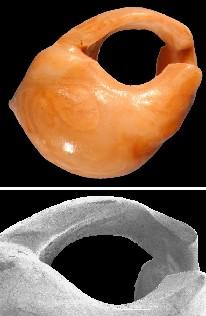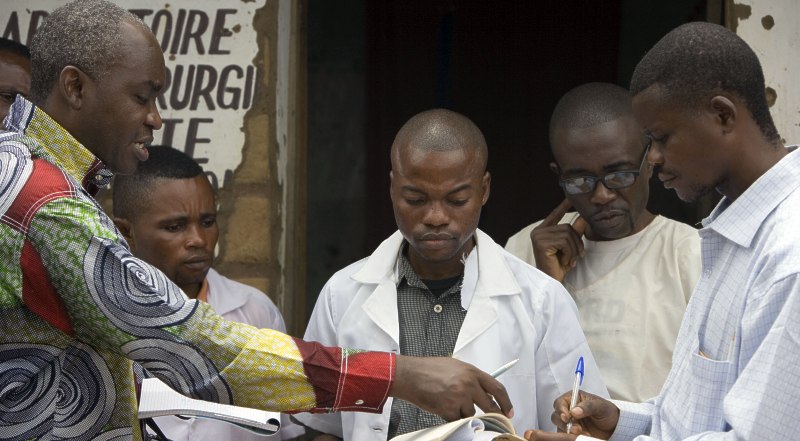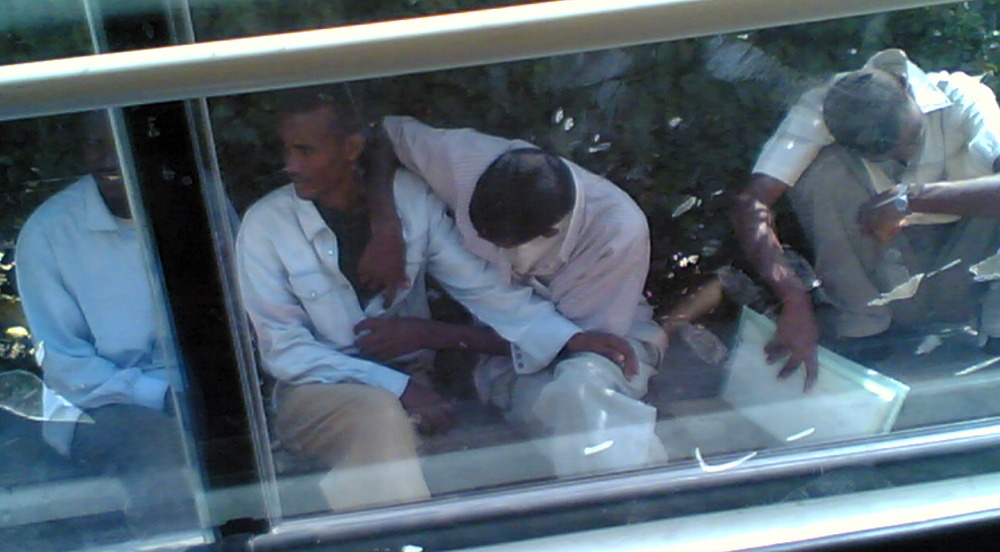|
Africa | Kenya Culture - Arts | Society Beads - a showcase of Africa's heritage
It is an inspiring success story. In 1969, Alan Donovan - one of the last Americans sent to Nigeria by the US State Department during the Biafran war - decided he no longer wanted to be a bureaucrat. He learnt French, bought a Volkswagen bus and drove across the Sahara. He began buying beads and artefacts, beginning what has now become Africa's largest collection of original works of art, handicrafts and jewellery. Reaching Kenya, Mr Donovan spent three months in Lake Turkana, an area little known to foreigners. He began making jewellery, using beads and the shells of ostrich eggs, inspired by the earrings of Turkana women, which few people at that time had even seen. "The earrings were beautiful, but there was no way a Western woman could wear them the way an African woman could," Mr Donovan explains. "I just made them more wearable." A former Kenyan foreign minister, Joseph Murumbi, became interested in Mr Donovan's jewellery. Thus, the two men and Mr Murumbi's wife, Sheila, set up their first shop. Demand for their jewellery proved so great, they set up several larger workshops employing hundreds of artisans who have produced over a million designs for the global market. African Heritage jewellery has been exhibited at the Los Angeles County Museum of Natural History, The Carcoran Gallery of Art in Washington DC and The Museum of Natural History in New York. It is now available in New York, Los Angeles, London, Cape Town, Zanzibar's Stone Town and across Kenya. One of their latest venture is the African Heritage Gallery, in Nairobi's Carnivore restaurant, opened in December 2000. The building is based on the mud architecture of Africa, especially the mud mosques at Timbuktu and Djenné in Mali. More than just a shop, the gallery also contains a mini-museum, The African Bead, tracing human history in Africa for the past 12,000 years through its beads. Through 30 illuminated small theatres, The African Bead, explains mankind's fascination with adornment, from the first bead discovered in Africa to modern jewellery designers. Beads have been worn for decoration, as insignia or royalty, for magical and curative powers and as a badge of wealth. Beads were buried in the tombs of kings as their most cherished possessions. They were bartered for ivory, goldá and for human lives during the slave trade. Beads were even used to purchase the island of Manhattan in New York City, now the most valuable piece of real estate in the world. The journey starts with the oldest bead found in Africa in about 10,000 BC, which was chipped from the thick shell of the ostrich egg in what is now the Kalahari Desert. The story of African beads may however be even more fascinating than portrayed at the centre as archaeologist Chris Hens
The Kenyan journey however starts about 12,000 years ago. Other such beads, around 10,000 years old, were also found in present day Libya and Sudan. For centuries, similar beads were chipped of eggshell by Kenya's Turkana women and used as dowry, or akarim. However, they have now been prohibited to wear the beads because of laws to protect Kenyan wildlife. The first bead made in Africa was created of a special soft clay called faience, which is usually vivid blue or dusky green. Faience tubes and beads were woven into elaborate collars for deceased royalty and millions of beads were buried with kings in Egyptian tombs. The ancient Egyptians worshipped the scarab beetle, believing that the insects were reincarnations of their ancestors. They fashioned faience - which they believed to be magical - into beetle shapes and used them as royal seals on the tombs of pharaohs. Faience beads are still being made using the same age-old techniques in Egypt. By the fourth century, caravans of glass and stone beads from European, Indian and Middle Eastern traders were arriving across the Sahara. Beads were a focal point of the empires which developed out of these trade markets. Cowrie shells, valued for their shape symbolising female fertility, have been used as legal tender for many centuries. Billions were brought in by the Portuguese in the 19th century, though they have been found in African burial sites dating back to 8000 BC. In the Old Kingdom of Benin, beads were so important that a ceremony named 'The Honour of the Beads' was established many centuries ago, similar to knighthood in Europe. Once a year, the Oba (King) rode through the city, personally conferring upon specially selected subjects the honour of wearing the royal bead. To appear before the Obas without wearing the beads thereafter was an offence punishable by death. At first these royal beads were hand carved of jasper and carnelian, mined locally or imported from India. Coral beads were then introduced by the Portuguese in the 16th century. Whole shirts and tunics of Benin court costumes were made of them. The coral clothes were so heavy, an Oba could only walk supported by two attendants. Commoners were forbidden by execution from wearing royal beads, so clever imitations were made as far back as the 17th century. These old glass beads are nearly as treasured now as the royal beads. Benin and Nigerian Yoruba royalty still wear coral beads, as well as the ancient beads made of agate and jasper. All the beads on display at The African Bead were collected by Alan Donovan on twice yearly trips covering more than 20 African countries. He then fashions them into jewellery based on traditional designs. "I think Africa's indigenous and cultural heritage is under-appreciated, both in Africa and worldwide" he says. "This is a step toward preservation." By Katy Salmon & afrol News editors © IPS / Katy Salmon / afrol News
Current afrol News Top Stories
|
front page
| news
| countries
| archive
| currencies
| news alerts login
| about afrol News
| contact
| advertise
| español
©
afrol News.
Reproducing or buying afrol News' articles.
You can contact us at mail@afrol.com









